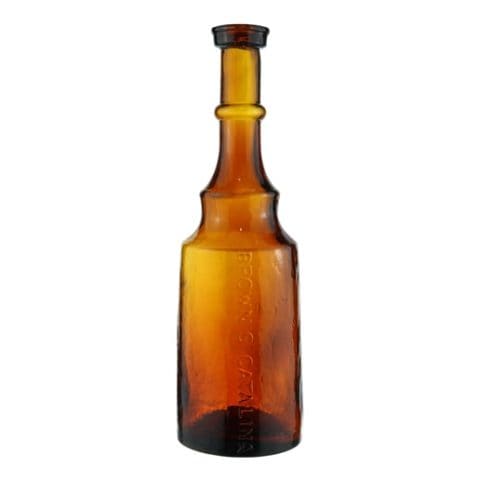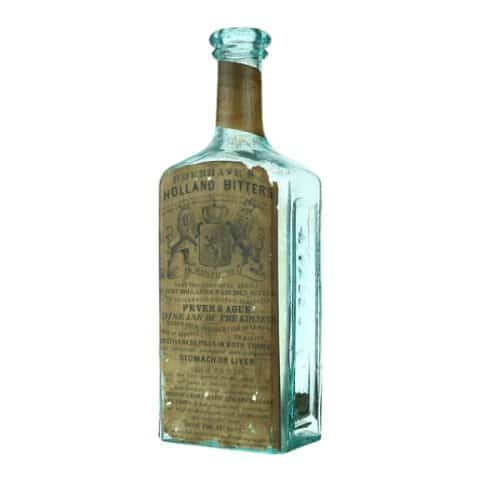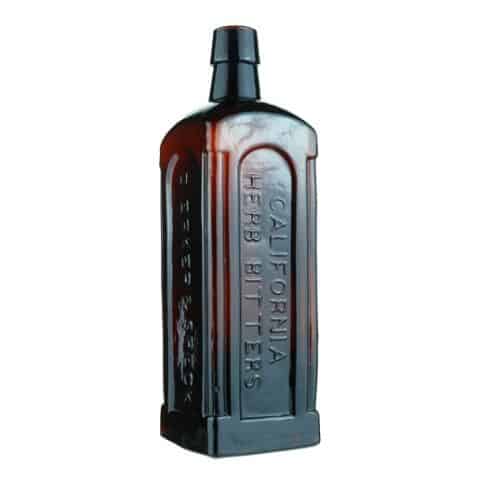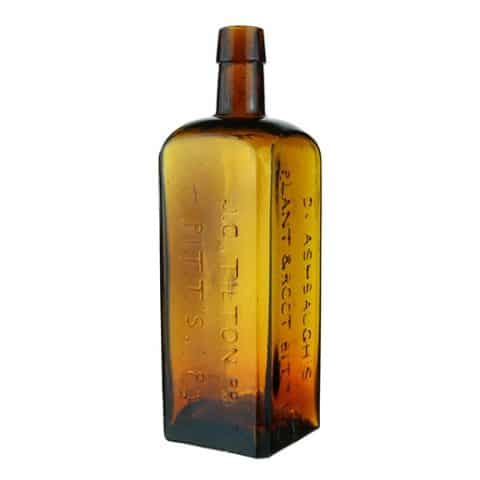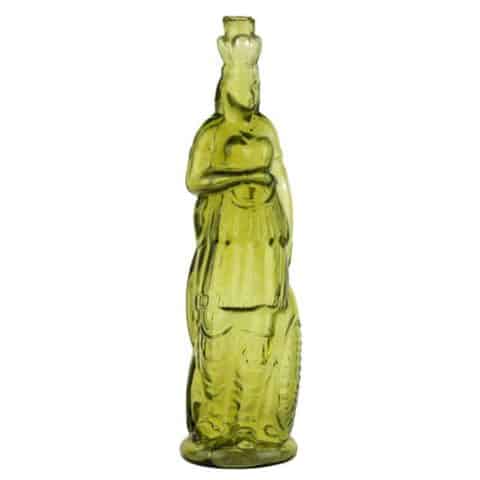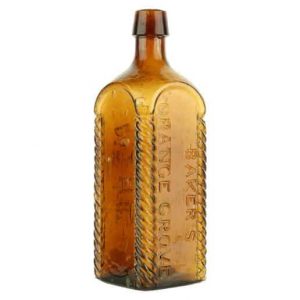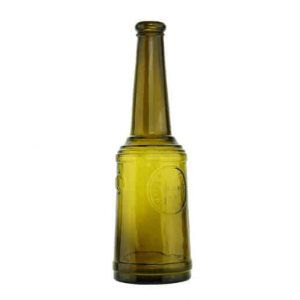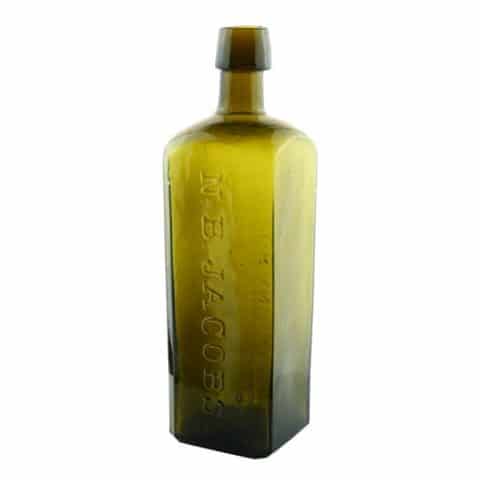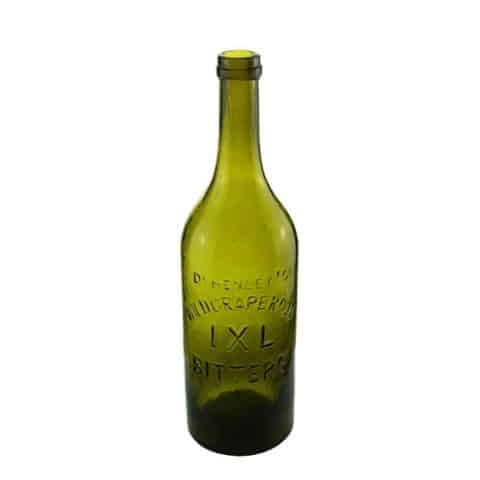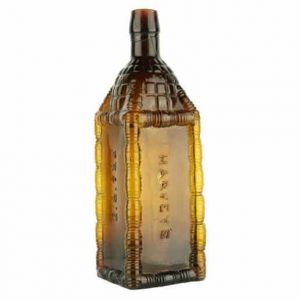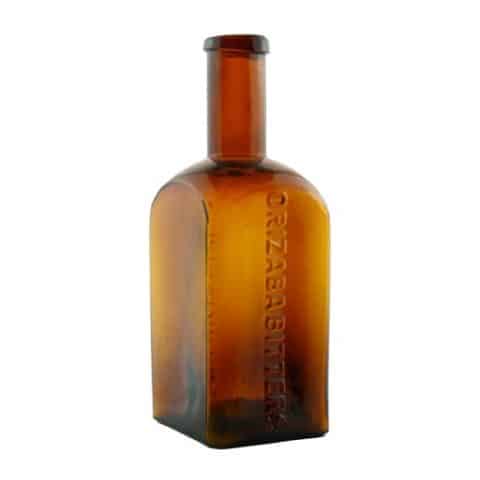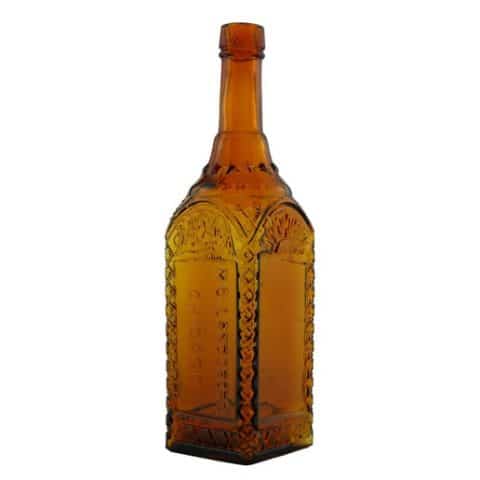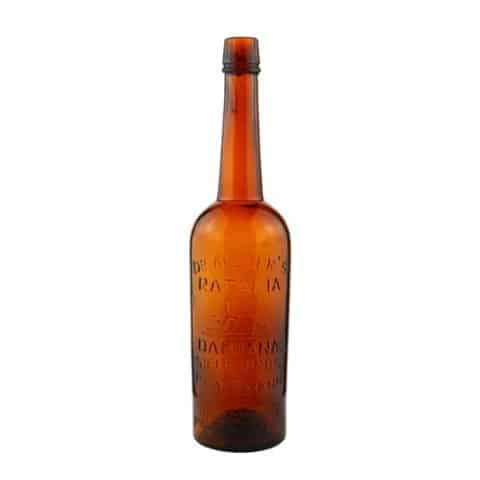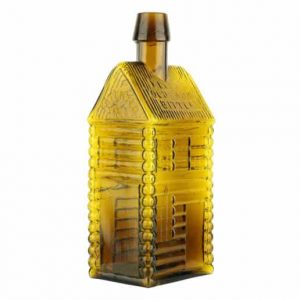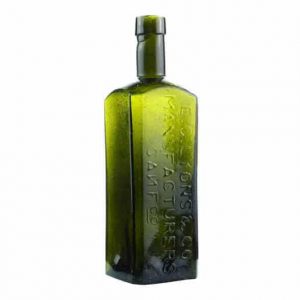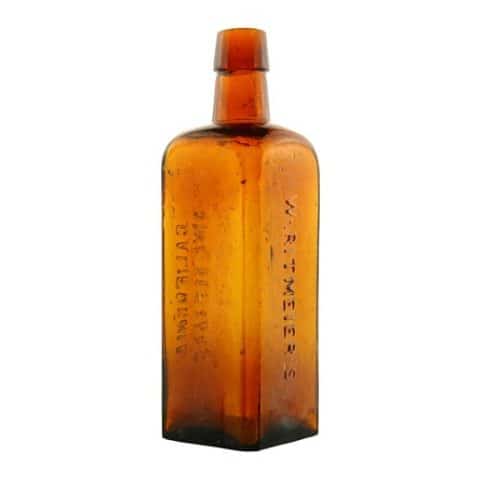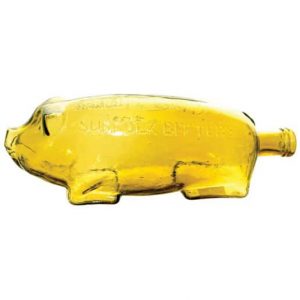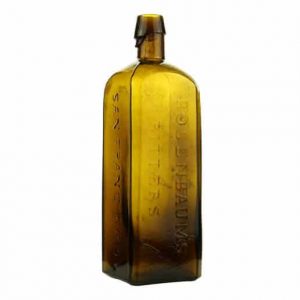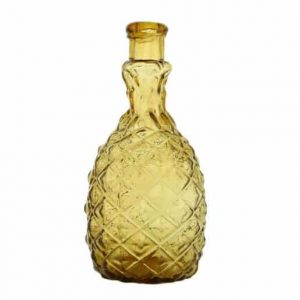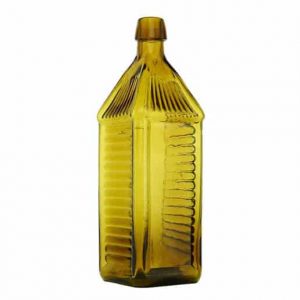National Bitters (Ear of Corn)
National Bitters
Patent 1867
N 8
Schlicter & Zug, Philadelphia, Pennsylvania
Olive-Yellow Tone Figural Ear of Corn
Provenance: Ferdinand Meyer V Collection

One of the top figural bitters bottles, the National Bitters from Philadelphia, Pennsylvania, stands tall with other figural bitters including queens, fish, pigs, cabins, and barrels. The figural ear of corn bottle also comes in a stunning array of glass colors.
The National Bitters was compounded and manufactured by Dr. Jacob Hatman Kurtz who was a graduate of the University of Pennsylvania. He was also an Acting Assistant Surgeon in the United States Army. Dr. Kurtz claimed to have been using his concoction for 35 years in private practice which would have been from about 1834 to 1867.

Kurtz made and sold his bitters in the ear of corn bottle at 920 Market Street in Philadelphia centering around 1867 when Patent Number 2,816 was issued to a Henry Schlichter and a Henry A. Zug on October 22, 1867, which corresponds to the embossing date on the base of the bottle. Schlicter & Zug then sold National Bitters wholesale.

The National Bitters Trade Mark depicts a relaxed and seated Lady Liberty serving a glass of National Bitters to an American Bald Eagle. She appears to be seated on a rock with the American flagpole and flag across her body. Two full bottles of National Bitters sit on the side.

In 1869, we see that the bitters is being sold by Walton & Zug, proprietors at No. 9 North Seventh Street in Philadelphia. In 1870, Walton & Zug obtained an important revenue decision from the Treasury Department, Office of Internal Revenue, stating that The National Bitters was a compound put up and sold as a medicine and when properly stamped, could be sold by dealers in stamped bottles. This meant that Walton & Zug would not have to pay the special tax as liquor dealers. By 1872, Jesse S. Walton was the sole proprietor located at the same address, No. 9, North Seventh Street. Zug must have moved on.
The bottles were made and advertised from 1867 to 1872 or so. They were probably made at the Whitney Glass Works in Glassboro, New Jersey.
The Carlyn Ring and W.C. Ham listing in Bitters Bottles is as follows. Please note that we have updated the listing.

N 8 NATIONAL BITTERS // c // // b // PATENT / 1867
L … The National Bitters, Schlichter & Zug, Proprietors, 9 North 7th St. Philad’a
Label set in debossed oval with directions and dosage.
Later, Walton & Co. 9 North 7th St. Philadelphia, Pennsylvania
12 5/8 x 2 ¾
Figural ear of corn, STCR, Applied mouth, Amber – Common; Yellow, Yellow-amber, and shades in between – Scarce; Olive-yellow – Very scarce; Yellow and Puce – Very scarce; Medium to dark puce – Rare; Aqua – Very rare, Topaz – light gasoline puce – Extremely rare.
The National Bitters was compounded and manufactured by Dr. Jacob Hatman Kurtz who was a graduate of the University of Pennsylvania. He was also an Acting Assistant Surgeon in the United States Army.
Patent Number 2,816 was issued to Henry Schlichter and Henry A. Zug on October 29, 1867.
Probably made at the Whitney Glass Works in Glassboro, New Jersey.
Primary Image: National Bittes imaged on location by the FOHBC Virtual Museum midwest studio led by Alan DeMaison.
Support Image: If you wish perfect health, use the National Bitters, Schlichter & Zug, Proprietors, Philadelphia, R. F. Reynolds, 1867, chromolithograph, Library Company of Philadelphia, Library of Congress Prints and Photographs Division Washington, D.C. 20540
Support: Reference to Bitters Bottles by Carlyn Ring and W. C. Ham. Use of National Bitters illustration courtesy Bill Ham.
Support Images: From the Meyer collection, American Bottle Auctions, and American Glass Gallery (trio photograph).
Support: Reference to National Bitters – Schlichter & Zug – Philadelphia



